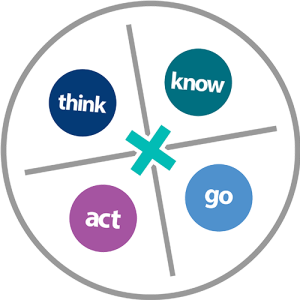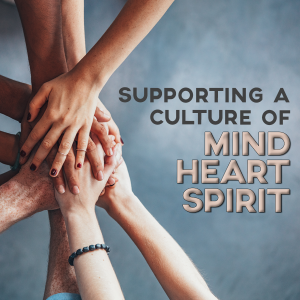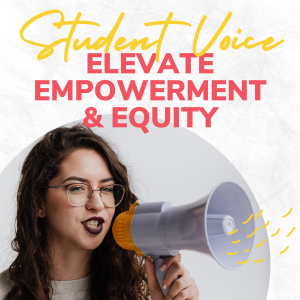[vc_row][vc_column][vc_column_text]Part of the process of absorbing knowledge is taking time to reflect on what you’ve learned. It can be hard to carve out time for this in the busy secondary school day. Anaheim Union High School District (AUHSD), a large, multicultural district in Southern California, has made it a priority. And this self-reflection culture is paying off.
Graduates are getting accepted at top colleges. Students are outperforming at UC Irvine—one of the region’s premier universities—with a persistence rate of 93%, compared to a general population rate of about 90%. “When we ask our postsecondary partners at these colleges, ‘what has made the difference?’, one of the biggest things they say is, ‘your kids think differently than other kids,’” explains Manuel Colón, Chief Academic Officer. “They say their essays are different. It’s how they’re thinking that’s made the difference, the way they process their learning that has helped our kids be successful.”
Here’s how student self-reflection at Savanna High School helped launch a new learning culture throughout AUSHD and became a new model for the district to benchmark how well students are gaining key skills.[/vc_column_text][vc_column_text]
Defining what students really need to know
Before the self-reflection approach got off the ground, Savanna High School had gone through a process of figuring out school identity. They got the entire school community involved in deciding what the school stands for. With this vision firmly established, they turned to defining student learning capacities (SLCs). [/vc_column_text][/vc_column][/vc_row][vc_row][vc_column width=”1/2″][vc_column_text]These are the skills every student needs to know when they graduate. They were also created with broad participation by the school community and closely aligned to the school vision.[/vc_column_text][vc_column_text]Savanna High School now expects every student to graduate as
- Critical thinkers and inquirers…
- Communicators and collaborators…
- Digital age learners…
- Who are academically and personally accountable…
- And globally aware and culturally competent.
[/vc_column_text][vc_column_text]To help students gain these skills and make the school’s vision a reality, Savanna High School leaders understood they’d need to take on a few challenges.[/vc_column_text][/vc_column][vc_column width=”1/2″][vc_single_image source=”featured_image” img_size=”large”][/vc_column][/vc_row][vc_row][vc_column][vc_column_text]
Keeping student learning capacities in focus with self-reflection
One challenge was how to emphasize these skills across every subject area taught. “What does it look like to be a critical thinker and inquirer in the math class, in the English class, in the social studies class, in the art class?” is how Carlos Hernandez, AUHSD’s Director of Curriculum and Instruction, describes this transition. “In math class, it’s no longer just about math content and standards. The teaching framework also needs to include, ‘how am I helping students become globally aware and culturally competent? Are they becoming digital age learners?’” Teaching needed to happen through the lens of the SLCs.
Another big challenge was how to make sure students were actually acquiring the skills. The school’s professional learning team took on the problem. They developed a reflective process to follow every activity. “John Dewey said it beautifully,” notes Hernandez. “We do not learn from experience, but we learn from reflecting on experience. If we don’t reflect, we don’t learn.”
Under the learning team’s recommendations, students would now have time set aside in class to write up answers to questions like how did this teach you to be a communicator and a collaborator? How did this teach you to be a digital age learner? Under the inspired leadership of one English teacher, the school launched the effort as a pilot project for seniors in a single classroom. [/vc_column_text][vc_column_text]
From pilot program to districtwide culture
Students were assigned to create a portfolio with reflections on the projects they’d done and how they relate to the SLCs. At the end of the school year, these seniors were asked to participate in a portfolio review to demonstrate they’d acquired the skills.
The concept was similar to a higher ed dissertation, when a student is asked to defend their research and their evidence to a panel. In this case, seniors presented their portfolios to a panel of adults from the Savanna community as a capstone project. It was a test of how well the practice of embedding self-reflection into classroom lessons worked.[/vc_column_text][vc_single_image image=”45193″ img_size=”full” alignment=”center”][vc_column_text]Both the self-reflection process and the portfolio review worked so well that the program was expanded to the entire senior class the following year. Some of the elements were made voluntary. “We had implemented the student learning capacities, and our school vision was already pretty clear on our campus,” says Colón. “Every teacher was already embedding the learning capacities in their class. Everyone was already doing reflections on those activities.” The capstone interview was offered as optional.
Seniors were given the opportunity to select their best work for any of their classes to show the learning capacities they had acquired. There was no grade given. “We just said, ‘hey, this is the expectation, we want you guys to do it,’ notes Colón.
“And all of the teachers volunteered to participate. One hundred percent of the students volunteered to participate. That included our students with disabilities. Our English Learners. All of our students.” Plus, school stakeholders from staff to parents to community organizers and partners were recruited as review panelists, giving them a window onto what students are taking away from their time at Savanna.
AUHSD expanded student self-reflection practices across all high school grades, then to new schools, which were phased in over time. Students have one digital folder for the purpose, with time allocated in English class for students to do the work of assembling their portfolio and preparing for the capstone presentation. Since the effort began in 2011, self-reflection has become part of district culture.[/vc_column_text][vc_column_text]
Side benefits of student self-reflection
Written reflections from every student in every class are a record of how well skills like interpersonal communication, critical thinking, collaboration, and personal responsibility are being learned in the district. They’re a way to quantify student progress on capacities that are essential for life after high school but aren’t easily measured by standardized tests. They’re also how teachers can track and report on progress. Both students and teachers have a way to be accountable.
A surprising ripple effect for AUHSD has been the powerful feedback loop between the student capstone presentations and what goes on in the classroom. Because students have a choice of what to present as their “greatest hits,” teachers participating in the portfolio interviews started wondering, “why is only certain teachers’ work being selected?” The capstones are an organic motivator, a way to inspire teachers to do a better job of infusing the learning capacities in their classes, so students select work from their classes to showcase.[/vc_column_text][vc_column_text]
Boosting student success and improving schools
Colón has found self-reflection to be a powerful approach to helping students define life after high school. In portfolio reviews, “Students are articulating not only how they acquired these learning capacities but what it means for them in the future. They’re saying, ‘what does me being a communicator and a collaborator mean not only for the work that I’m going to do, but for how I’m going to move forward with my life?’
“Self-reflection is how students process through their schooling what they’re going to do when they leave. Are they going to go into the military? And they understand why. Are they going to go to the community college? And understand why. Are they going to go to a four-year college and understand why? Are they going to go into the workforce and understand why?”
Making student self-reflection central to instruction can also cement essential learning and spark school improvement. AUHSD is showing this works in diverse, largely low socioeconomic schools.[/vc_column_text][vc_column_text]This article is based on Inflexion’s webinar coaching clinic as part of a series, where school leaders hear from other school leaders on best practices. Watch the video shorts for more.[/vc_column_text][/vc_column][/vc_row]




